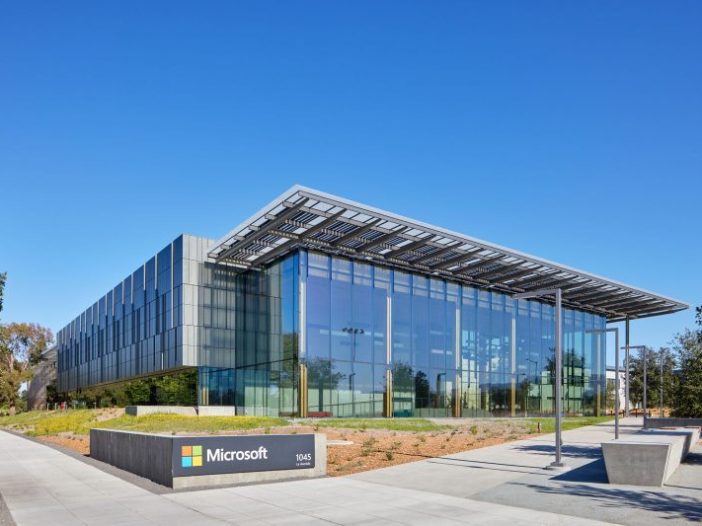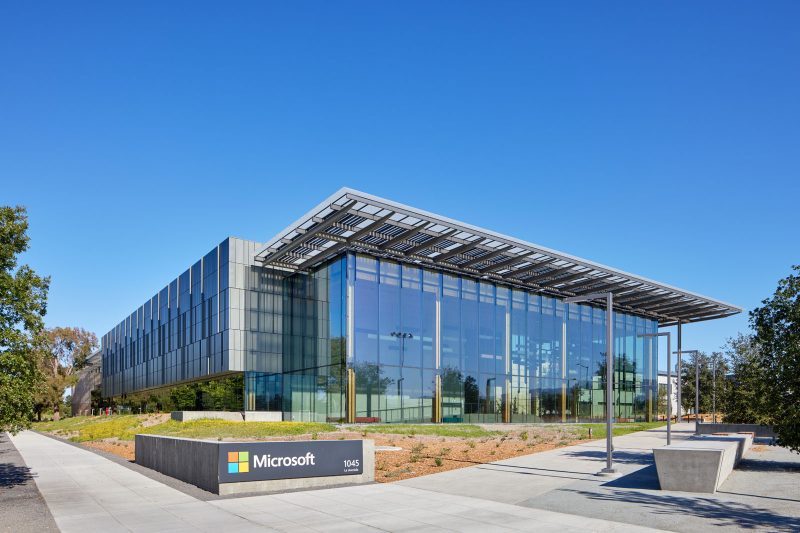
Microsoft has contracted with Enchanted Rock to develop a data center microgrid — the largest microgrid in California to date that will use renewable natural gas (RNG) to offset fossil fuels.
Located in San Jose, a city whose mayor has become an outspoken advocate of microgrids and grid independence, the microgrid will be part of a Microsoft data center being constructed.
Plans call for a 100MW microgrid that will include 224 natural gas generators, each with a 0.45 MW capacity.
The microgrid represents a growing trend of offsetting use of fossil fuels with RNG, a fuel made from capturing methane produced by decomposing waste from livestock, water treatment, food and other sources. Texas-based Enchanted Rock was one of the microgrid companies early out of the gate in using RNG, which allows developers to offer clean energy with the reliability of fossil fuels.
The on-site generators will not actually use RNG — they will be fueled by natural gas — but Enchanted Rock will inject an equal amount of RNG into the grid to offset the natural gas use.
California incentivising RNG
California has been pushing renewable fuels as an alternative to fossil fuels and offers an incentive covering up to 50% of an RNG project’s interconnection costs, with a cap of up to $1.5 million per project.
The program is capped at $40 million statewide and has $10.5 million in incentive funding remaining, with nearly $50 million of applications in the queue, demonstrating the growing demand for RNG.
Enchanted Rock said in a regulatory filing that ample new supplies of RNG are available from 158 projects planned or under construction. The company said it has also confirmed with its preferred RNG supplier that it can provide enough RNG to cover up to 509 hours of annual generator operating time for up to 99 MW, starting in 2024.
The microgrid will interconnect at Pacific Gas & Electric’s (PG&E) Los Esteros Substation — adjacent to the Microsoft site — and will provide power to the data center during a grid outage.
As is common for Enchanted Rock microgrids, it will also provide a range of energy management and grid services, such as load shedding, demand response and ancillary services.
Uptime plus sustainability
For Microsoft, the microgrid offers not only reliable power but also a way to meet sustainability goals. Microsoft wants to become carbon negative by 2030.
The project will exceed the stringent emissions requirements of the California Air Resources Board for distributed generation, with hourly local emissions 80%-96% lower than Tier 4 diesel standards, according to Enchanted Rock.
“Today’s digital world relies on the uptime and continuity of data center operations,” said Thomas McAndrew, CEO of Enchanted Rock. “This continuity does not need to come at the expense of companies’ carbon emission reduction goals or local air quality.”
The microgrid will serve two buildings spanning 396,914 square feet. Enchanted Rock plans to begin installing the microgrid by late 2023 and complete it by mid-2024.
More data center microgrid projects for California?
State Senator Ben Hueso, a Democrat who represents California’s 40th district, said that he hopes “one day all data centers will replace their backup power systems with carbon-negative, clean renewable natural gas. Today’s announcement will set a precedent I believe all of California’s roughly 240 data centers should follow.”
Microsoft’s project is the second announced in recent months by a technology giant in San Jose. Google plans to build a microgrid as part of an 81-acre mixed-use development on the west side of downtown San Jose. That project is currently under review by the San Jose City Council.
San Jose Mayor Sam Liccardo has been pushing for more energy independence in the city following an outage in 2019 when PG&E shut off power to 60,000 San Jose residents to avert wildfires.
This article was originally published on Microgrid Knowledge. Reproduced here with permission



